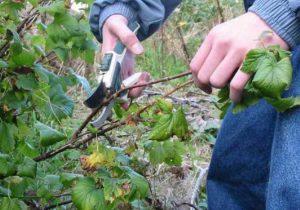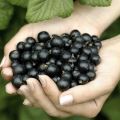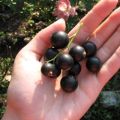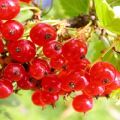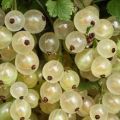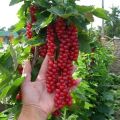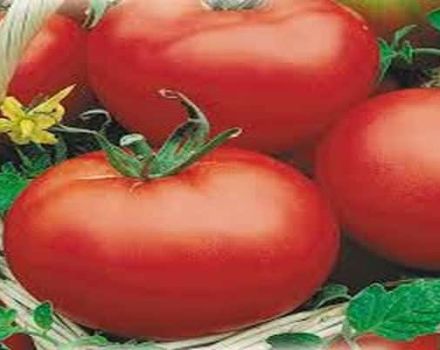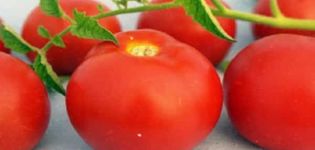Description and characteristics of the raisin currant variety, planting and care
The pride of every amateur gardener is the Raisin black currant. Sweet one-dimensional fruits, densely set on twigs and sometimes resembling cherry in size, are a characteristic feature of this variety.
History of selection of currants Raisin
In the second half of the 20th century, American gooseberry powdery mildew completely affected black currants. Spheroteka spread throughout Europe, and then Russia. To combat this scourge, research has begun. Scientists have come to the conclusion that closely related crossing of samples increases the resistance to diseases in donor varieties. At the same time, new sources of immunity are allocated.
This is how breeding number 12-173 appeared from the Goliath and Seedling Cherny family - a source of immunity against powdery mildew (spheroteka). With the participation of this number, a complex hybrid 37-5 and a Seedling of a Golubka - the Izyumnaya variety was created. The author is the outstanding Soviet and Russian scientist A.I. Astakhov (1931-2007).
Advantages and disadvantages of the variety
Blackcurrant variety Raisin is endowed with both positive and negative qualities.
Advantages:
- drought and frost resistant;
- resistant to kidney mites and powdery mildew;
- resistant to changes in air temperature;
- does not crumble until autumn;
- unpretentious in care;
- dessert fruits, honey-sweet.
Disadvantages:
- poorly resists septoria;
- difficult to propagate with woody cuttings.

Description and characteristics
Black currant has always been a popular berry in Europe and Russia.
Bush appearance
The currant bush is neat, upright, in the stage of formed in height it reaches no more than one and a half meters. The crown consists of branches of different ages. Mainly fresh growths bear fruit.
Leaves whole, alternate, graceful three-lobed shape, bordered with denticles. The surface is rough, even green. On the back of the leaf there are glands that create an extraordinary currant aroma when rubbing the leaf on your fingers. The roots of the currant are of a fibrous structure, reaching a depth of 35 cm.
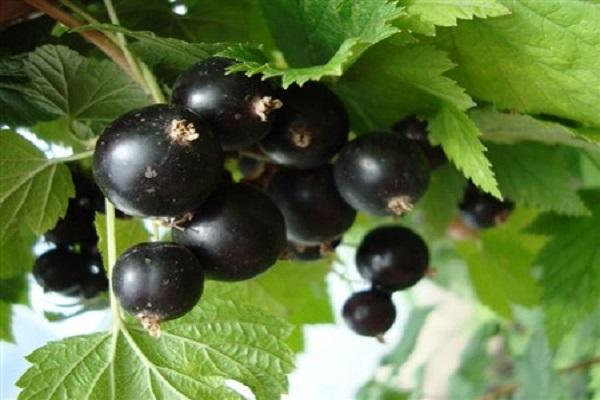
Flowers and fruits
Five-petal ovaries (up to 11 pieces) of Raisin currant, blooming, create a fragrant flower cluster of a pale yellow hue.Early flowering - in the first third of May. Under unfavorable weather conditions or improper care, non-pollinated ovaries crumble.
Fruits are round, large, black, without shine. With the coincidence of good care and favorable weather conditions, they reach a mass of 3.3 g. Ripen almost simultaneously, do not crumble for a long time. The berries taste sugary, honey-sweet, with an amazing currant aroma.
Productivity and fruiting
The genetically declared large-fruitedness of the Raisin currant is manifested only if the obligatory agrotechnical conditions of cultivation are observed during setting and flowering.
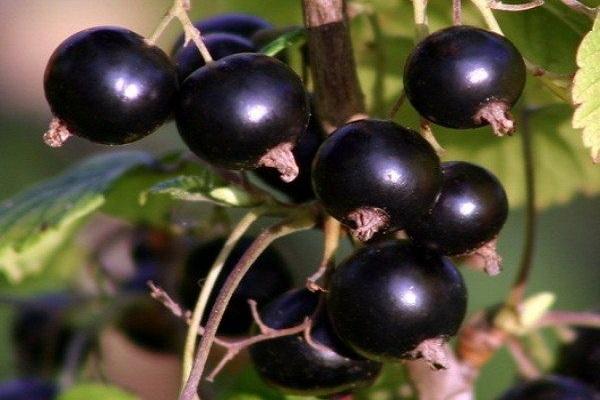
The berries become noticeably smaller with aging of the branches and differ in size in different soil and climatic zones.
Likewise, the number of berries in a brush depends on various factors:
- the level of self-pollination;
- the presence of another variety surrounded by bushes;
- weather conditions before and after flowering, when, due to drought or heat, some of the ovaries crumble.
Currants bear fruit up to 15 years. In good years (usually on the sixth), up to 2.5 kg can be removed from the bush. On an industrial scale, the average yield is 11.2 t / ha (1.71 kg / bush), the maximum is 13.6 t / ha (2.0 kg / bush).

Where is used currant Raisin
Currants are consumed in their natural form, they are good and like raisins, not immediately removed from the branches. At home, they prepare fruit drinks, juices, jelly desserts, marmalades, tinctures, liqueurs. For the preservation of useful properties until the next season, the currants are frozen, dried, preserved in gentle ways.
It is a powerful antiscorbutic, antipyretic and appetite stimulant. Black currant supports immunity, delay aging, helps in the treatment of heart disease, skin diseases, diabetes.
On an industrial scale, on its basis, high-quality fillings for confectionery products, syrups, extracts, wines, liqueurs, dry jelly are produced. In the vitamin industry, Raisin currant is used in the manufacture of concentrates and preparations of vitamin C.
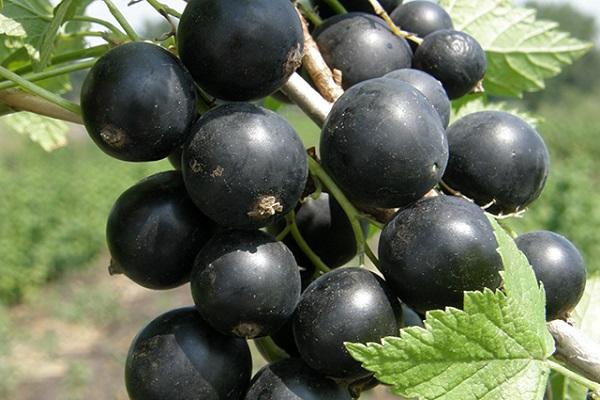
Drought resistance and frost resistance
Black currant Raisin is drought tolerant and successfully grown in arid areas. It easily survives in frost down to -39 C. The flowering and fruiting temperature of this variety is 20-25 C.
Susceptibility to diseases and pests
Not afraid of kidney mites and powdery mildew. The least researched analogue is resistant to septoria. Pests have to be dealt with in a general manner.
Landing features
Terms of planting works
It is best to plant Izyumnaya black currants in the fall: in the north of the country - in the third decade of September, in the southern regions - in October, November. The bush will take root until frost, and in the spring it will already receive the necessary nutrition.
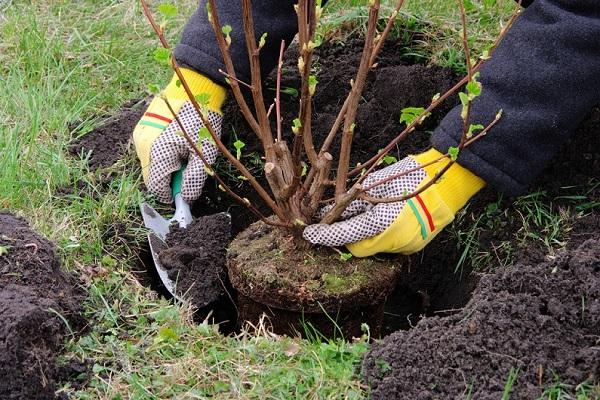
In the spring, as the soil condition allows and before bud break, there will be little time - before the growing season, the plant should have time to take root minimally.
Determining the place
The most suitable soil for Raisin currants is loose sandy loam or loam. Waterlogging and high moisture content of the earth are unacceptable. On acidic soil, the berries become smaller, the harvest is not happy. The place for planting currants is selected sunny, well-lit, usually along the fence or paths.
Blown areas are excluded. The north and north-east winds are especially destructive.
Cooking beds and a plot
The beds must be built, observing the above conditions. Places for planting seedlings should be prepared in advance.

When planting raisin currants at a distance of up to 2 m between the bushes, the berries will become larger in size and surprise you with their aroma. The taste of currants will be sweeter, and the harvest will be higher, respectively, and the bushes will delight with harvests longer.
- If the soil is fertilized, superphosphate, wood ash and urea mixed with the ground are introduced into the hole in a ratio of about 200: 350: 45.
- We process the depleted soil in advance, digging it deeply with the addition of manure, ash and potassium-phosphorus fertilizer.
Selection of seedlings
It is necessary to critically assess the condition of the plant:
- there should be no traces of mechanical damage or rot on the roots;
- shoots - not damaged by pests, healthy, flexible;
- foliage - elastic, without spots and other possible traces of the disease.

Sapling planting technology
Guide to action:
- prepare grooves with sides of about 50 cm with a distance from each other of at least 1.5-1.8 m;
- add a mixture of superphosphate and humus to the loose soil at the bottom of the pit;
- cover with earth 10 cm;
- currant roots that have been pre-soaked for about 4 hours, lower them at an angle of 45 degrees into the depression and straighten them;
- cover the roots and root collar of the seedling with soil by 7-8 cm;
- lightly trample the ground around the trunk, water and mulch;
- in the spring, trim the branches to 3-4 buds and water the seedling as needed.
Reproduction of the Raisin bush
Experienced gardeners recommend to amateur gardeners the method of propagation of Raisin currants with regrown cuttings. To do this, it is enough to press the currant twig to the ground with a hairpin and cover it. When the cuttings take root, the cuttings with the spine are cut off and planted.
You can propagate raisin currants - by dividing the mother bush.
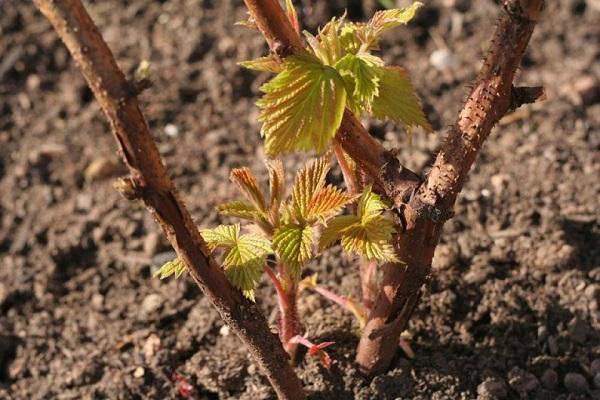
Organization of competent care
Irrigation and fertilization
Currant Raisin is drought-resistant. But for a good, big harvest, the land must be abundantly moistened. Watering is preferable in the evenings. Then - mulching. The crowns of the bushes themselves, in the absence of rain, need irrigation 2 times a week.
Experienced gardeners know the secret of getting large berries: water the bushes generously in spring, but treat the flowers even more carefully when the buds swell. At this time, they need increased humidity in the air. With a hose with a splitter, you will solve this problem easily, and the currants will gratefully respond to care at the end of the season.
Immediately after planting, feeding the young bushes is not needed, but in the future in the spring, 45 g of urea will noticeably affect the yield.
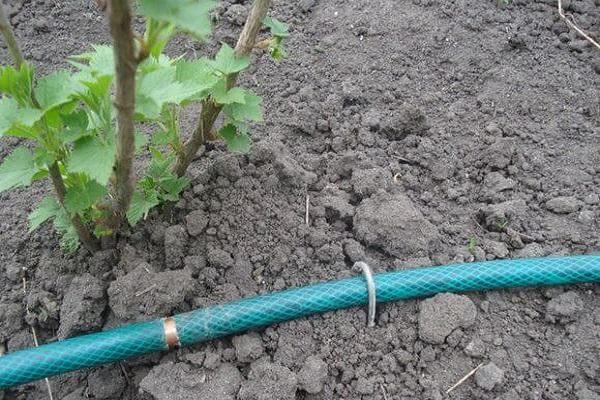
During the period of active tying, the currants need replenishment: when tying berries - a good bucket of solution, complex, mineral fertilizer on a large bush. After harvesting, you should feed the plants with superphosphate and a glass of ash.
Experts recommend to cover the bushes with humus at least once every 2 years, followed by adding soil.
Loosening the soil
The currant variety Raisin, like any garden culture, requires loose soil. It must be maintained throughout the season. It is important not to damage the roots close to the surface by loosening. Loosening is not required if the trunk circle is lined with mulch.
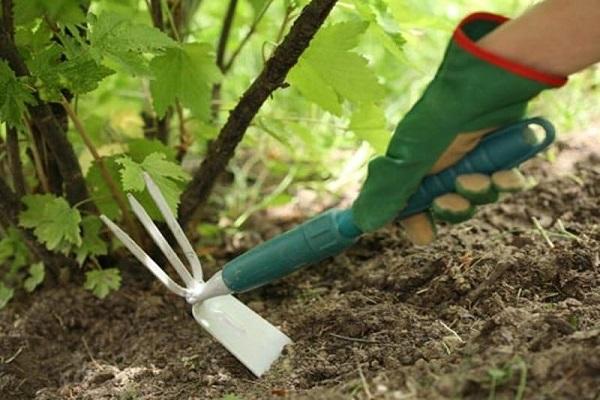
Bush formation
- The general rule for the formation of a bush is to leave 3 new shoots every year, cutting off 2 buds from each.
- In the first season, young shoots are cut off up to 3 buds.
- In the following years, each of the 3 young shoots left is shortened by 2 buds.
- In addition, in seasons 3 and 4, last year's branches are pruned 10 cm to encourage branching.
- Branches five years old and older are pruned at the trunk.
- Then the old ones are cut out every year, leaving the same number of young ones.
- After 10 years, the bush is divided and transplanted.
- A good adult currant bush should have 10-15 strong main branches of different ages.
Shelter for the winter
The raisin currant practically does not need shelter, only in case of frost more than 39˚C or:
- a young bush up to 2 years old;
- recovered after illness or early foliage;
- waiting for a snowless or very frosty winter.
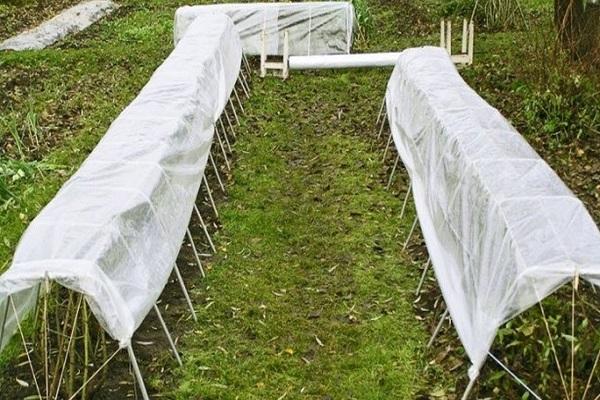
Preventive treatments
To prevent diseases and the appearance of pests in the garden, it is mandatory:
- timely pruning to prevent thickening of the branches;
- burning cut damaged branches;
- digging of row spacings in late autumn to destroy pests prepared for wintering;
- early spring treatment with boiling water of each branch before flowering.
You can collect more onion and garlic husks in winter and scatter it in the spring under the currant bushes: she will not be afraid of many common misfortunes.
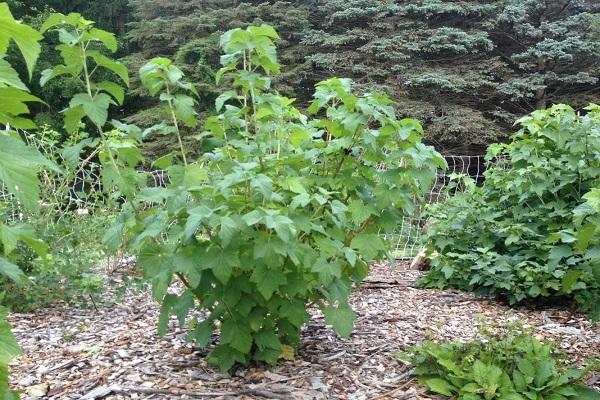
Why currants do not bear fruit
- There is not enough sun.
- Acidic soil.
- There is not enough moisture during the budding period.
- Reverse is a disease in which fruiting stops.
- The butterfly is a glass case.
- Forest ants eat away the inside of the flower, leaving empty sepals.
- Soil salinity, even the lightest.
- Excess fertilizer.
- Grows in thickets of garden trees.
Reviews of gardeners about culture
Kriulev Y.P., a test gardener from Nizhny Novgorod
I would like to pay special attention of gardeners to the raisin currant. The variety with excellent taste (4.7-4.8 points) is resistant to diseases, has good winter hardiness. It does not crumble when fully ripe, but gradually dries up on the bush, as if "raining", from where it got its name.
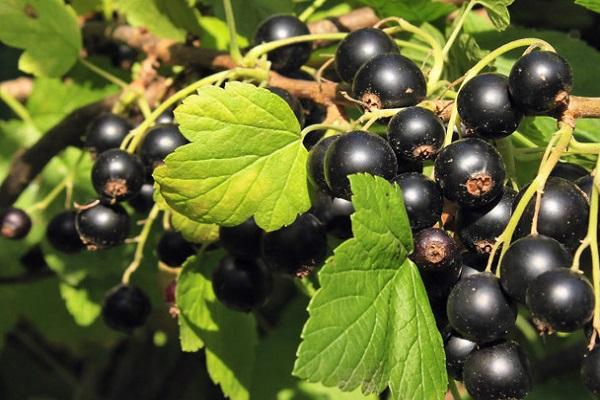
Sergey Chudopalov, gardener-variety tester:
An even better variety is Raisin. It's much sweeter. This variety is early, but the berries are so firmly adhered to the branches that they can hang withered until winter, if they are not pecked by birds. Their high sugar content (10-12%) makes them look like raisins - hence the name. In addition, Raisin winter-hardy, resistant to powdery mildew, kidney mites.

